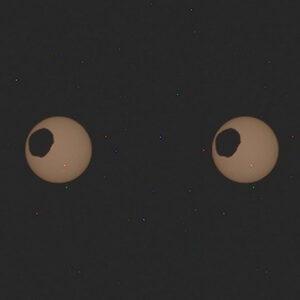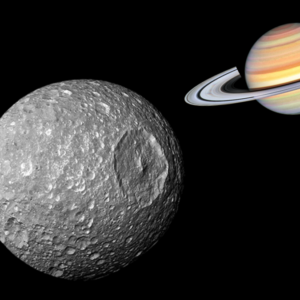
Life in space doesn’t seem so farfetched these days. With all the talk of SpaceX and the incredible images from the James Webb telescope, outer space no longer feels like it’s light years away.
Now, scientists share that there may be some heavy evidence of life on one of Saturn’s icy moons named Enceladus, and a robot spacecraft that happens to have taken some of the methane emissions coming out of its liquid interior may just prove their theory to be true.
Now, NASA just needs for the robot to take a sample of these plumes, or if not, punch a hole through the planet’s exterior in order to take a closer look at the salty and warm ocean below.
When NASA first took a look at this moon back in 1980, they didn’t think there was anything to really check out since it just looked like another icy ball of snow in the sky. However, during a second NASA trip that took place between 2005 and 2017, what they found was that this moon’s thick icy layer was actually covering a large and warm saltwater ocean inside that released methane gas, something that normally comes from microbes on the planet Earth. This was discovered during one the Cassini spacecraft’s missions that flew through the water plumes that happened to be erupting from the moon Enceladus’ surface.
Just last year, scientists from the University of Arizona in the United States, as well as those from the Université Paris Sciences et Lettres in France worked together and hypothesized that the reason why methane gas could be found on the moon, it was because life must have emerged from there. They also explain that while the amount of bacteria in its ocean must be small, they just need the robot spacecraft to make a visit to confirm their existence.
University of Arizona’s Professor Régis Ferrière led a study that explained how they wouldn’t even need to land on Enceladus, but rather a well-equipped robot could just fly through one of its plumes to “confidently” figure out if life has evolved there or not.
Why Enceladus of All the 83 Moons of Saturn?
Enceladus happens to be just one of Saturn’s 83 moons, the 6th largest at that. It’s surface is frozen over, much like what a pond looks like during the coldest winter months. But what makes it even more special is that it reflects light more beautifully than anything else in the solar system.
At least 100 giant water plumes located on the south pole of the moon erupt through the cracks, whose icy covering is actually made by the planet’s gravity. And all the excess methane gas that gets pushed through the plumes looks a lot like the hydrothermal vents of the Earth that are found beneath the sea, where the tectonic plates of the earth meet.
There these tectonic plates meet, the hot magma that lies beneath the sea floor heats the water in the bedrock as it comes out, making “white smokers,” releasing incredibly hot and mineral-rich sea water. Meanwhile, the teeny tiny organisms that live beneath the sea with no access to sunlight actually survive on the energy of the chemicals that are released by the so-called white smokers to remain alive.
Professor Ferrière explains, “On our planet, hydrothermal vents teem with life, big and small, in spite of darkness and insane pressure. The simplest living creatures there are microbes called methanogens that power themselves even in the absence of sunlight.”
The scientists also explain that the methanogens ‘convert dihydrogen and carbon dioxide to gain energy and release methane as a byproduct.’ Meanwhile, they based their calculations on the theory that the moon Enceladus has methanogens that populate the hydrothermal vents in the ocean, which highly resemble the ones there are on Earth.
As a result, the team managed to work out what they believe the exact total mass of methanogens on Enceladus would be, and also the possibility that their cells and other organic molecules could also be expressed through the plumes.
The research team also says that any regions in the Enceladus that happen to have life would also ‘feed the plumes with just enough cells or organic materials’ which could be discovered by the instruments or robots placed on future space ship missions. They also say that while a future mission may have a hard time finding any direct evidence of life, the presence or absence of particular organic molecules – like certain amino acids – may just be indirect evidence ‘for or against an environment’ teeming with life.
The study’s first author, Dr. Antonin Affholder, shares, “The definitive evidence of living cells caught on an alien world may remain elusive for generations. Until then, the fact that we can’t rule out life’s existence on Enceladus is probably the best we can do.”
And now, because of these discoveries, scientists now wish to go back to the Enceladus moon where one specific mission intends to land on the moon sometime in the 2050s to collect “extensive” data about this.
What are your thoughts? Please comment below and share this news!
True Activist / Report a typo


